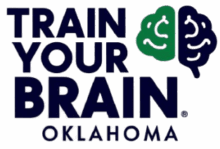Why Us
Why Choose Train Your Brain Oklahoma?
At Train Your Brain Oklahoma, we do more than provide a service — we partner with you on your journey to better brain health. Here’s what sets us apart:
What is Neurofeedback?
Neurofeedback is a safe and effective approach to address various mental and physical health concerns such as ADHD/ADD, attention and focus issues, mental stress, negative moods, sleep issues, and memory loss. This type of solution employs biofeedback techniques to help individuals learn how to generate healthier patterns of neural functioning within their brains. By providing real-time information about brain activity, neurofeedback assists individuals in gaining greater control over their neural processes, ultimately leading to symptom reduction and improved overall well-being.
What is the cost of Neurofeedback?
Train You Brain Oklahoma offers affordable neurofeedback services tailored to your needs. We also provide various payment options to include Health Savings Account (HSA), Flexible Spending Account (FSA), and financing through Advance Care.
What are the side effects of Neurofeedback?
There are absolutely no side effects associated with neurofeedback. In fact, the Food and Drug Administration (FDA) acknowledges that neurofeedback has never produced a serious side effect since its discovery over 50 years ago.
What is a qEEG and brain mapping?
A QEEG (Quantitative Electroencephalogram), also known as a “brain map,” is a report that provides detailed information about the electrical activity within the brain. It offers valuable insights into brain function and can aid in the assessment and remedy of various neurological conditions.
Does insurance cover the service?
While most insurance companies do not cover neurofeedback, we’re committed to making our services accessible. We’re happy to provide you with a superbill for submission to your insurance company. Additionally, we accept Health Savings Account (HSA) and Flexible Spending Account (FSA) cards as well as credit cards for payment convenience.
Can Neurofeedback be used alongside other forms of treatment?
Yes, neurofeedback can be used in conjunction with other forms of treatment, such as medication, talk therapy, and lifestyle modifications. Integrating these approaches can provide a comprehensive treatment plan that addresses both the physical and psychological aspects of health and well-being.
What happens during a typical Neurofeedback training session?
During a typical neurofeedback session, you’ll be comfortably seated while sensors are attached to your scalp to measure your brainwave activity. These sensors are connected to a computer, which displays your brainwave patterns in real-time. Through visual and auditory feedback, you’ll learn to regulate your brainwave activity, with the guidance of a trained brain coach. Sessions typically last around 30 to 60 minutes, during which you’ll engage in specific tasks designed to promote desired brainwave patterns and address your individual concerns.
Who can benefit from Neurofeedback?
Neurofeedback can be beneficial for individuals of all ages, from children to seniors. It’s a versatile approach that can address a wide range of conditions and concerns across the lifespan. Children with attention and focus issues, teenagers struggling with depression, adults managing stress or sleep issues, and seniors seeking cognitive enhancement or pain relief can all benefit from neurofeedback. The techniques and protocols used may be adjusted to suit the developmental stage and specific needs of each individual, making neurofeedback a valuable option for people of all ages.
